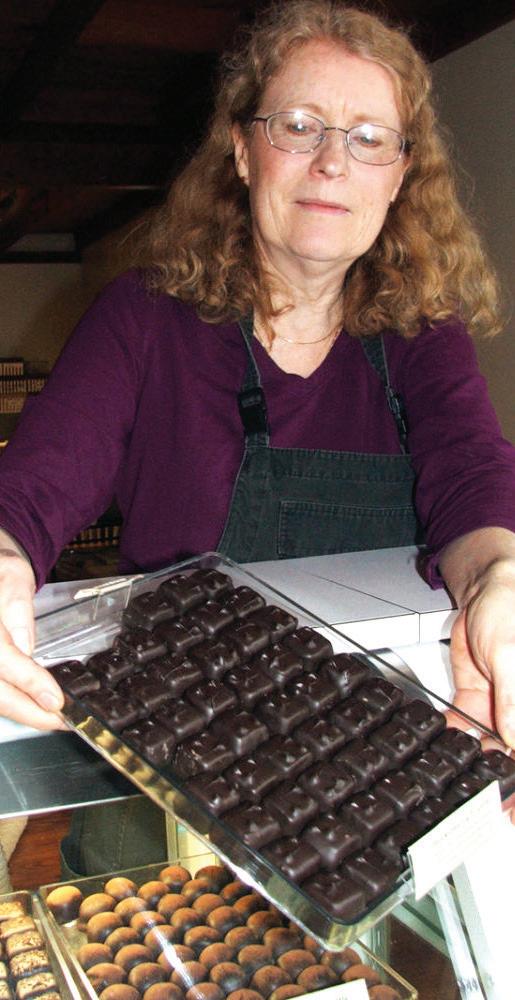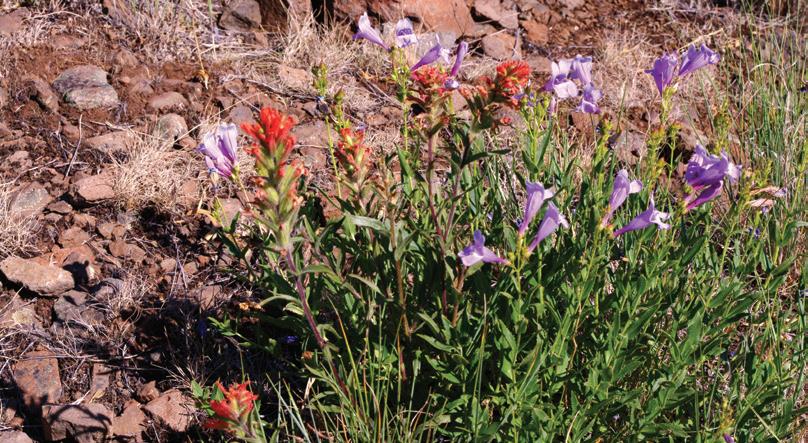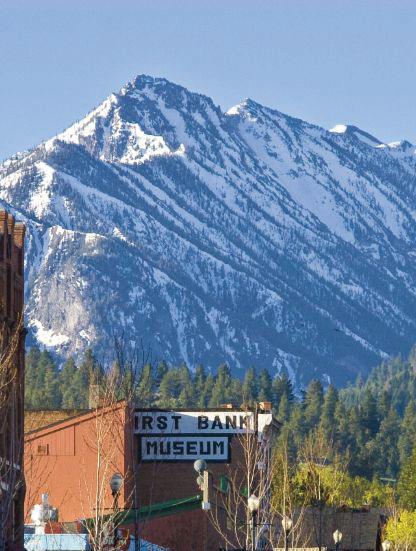
4 minute read
D iscover Tales of the tramway
For more than 50 years, visitors have ridden the gondolas to the top of Mount Howard
Story and photos by Ann Bloom
The Wallowa Lake Tramway is among the most popular attractions in scenic Wallowa County. It has whisked visitors to the 8,200-foot summit of Mount Howard since August 1970. It’s also been a key element in plans for an alpine ski area atop Mount Howard.
In 1964 Milo Mofitt and his company, Moffit Brothers, explored constructing a tramway that would carry passengers from Wallowa Lake to a ski area on private lands at Aneroid Lake. The landscape and the proposed tramway route appeared satisfactory, but the proposed route traversed the newly designated Eagle Cap Wilderness. The U.S. Forest Service denied the application.
The idea of having a gondola transport people to the summit of Mount Howard was a fond dream of the Wiggins family, owners of Wallowa Lake Lodge. In 1968 they led the formation of a new company, The High Wallowas Inc. The group worked with the U.S. Forest Service to obtain the needed permits for a lift to the summit of Mount Howard and a terminal building at the top. Most of the gondola installation, including the upper terminal facility, would be on the Wallowa Whitman National Forest. The Forest Service granted the permit.
In 1969, local forester Bob Jackson surveyed the right of way for the project. Then two fellow foresters, Leo Goebel and Dick Nusser, started clearing the trees for the gondola line. The vertical rise was 3,700 feet. It would be the steepest passenger gondola in the United States.
Big Sikorsky helicopters waited at what is today the tram’s parking area, to airlift towers into place on their concrete pads.
The original High Wallowas, Inc. gondola cars were multi-colored and smaller than today’s Tramway models.
Construction began in 1970. Concrete for the base of the towers was mixed in a batch plant near Wallowa Lake and lifted to the sites by helicopter. The gondola cars and the mechanisms came from P.H.B. Co. of Cologne, Germany. A huge Sikorsky helicopter hoisted each of the 25 heavy towers into place.
There were problems.
June is usually a cool month at the lake and in the mountains. But on June 4, when the helicopter arrived to lift the towers into place, temperatures were much higher than normal.
That made the air thinner so that the aircraft could not lift the No. 4 tower, which weighed 8,000 pounds.
On its first attempt to lift the tower, the chopper could only raise it about 6 inches off the surface. To reduce the weight, the pilots drained 200 gallons of fuel out of the chopper and also removed the doors. But even this failed.
On the last attempt to place the 4-ton tower the helicopter’s blades reportedly came within 3 feet of the treetops, and construction was postponed until cooler weather arrived.
The High Wallowas Inc. gondola was completed in late August 1970.


A plan for a downhill ski area on Mount Howard was first developed in 1979-1980 and an environmental impact statement was approved on Oct. 31, 1980. The plan included construction of two ski areas: the Mount Howard Ski Area, and the Wing Ridge Ski Area.
The ski area master plan proposed developing 118 acres near the summit of Mount Howard for skiing. A new 3,000-squarefoot ski lodge and four ski lifts would be constructed. Most of the Mount Howard area ski runs would be beginner or intermediate level, and one of the runs was to be lighted for night skiing. But the ski runs would end at lift facilities that were only about halfway down the mountain because in some winters, there was not enough snow to ski to the bottom of Mount Howard.
The proposed Wing Ridge area consisted of about 200 acres. Located near Salt Creek Summit, it would have included a T-bar tow and a rope tow. Power for these lifts would have been provided by an electric power generating station.
Neither ski area was ever developed. Community opposition included concern about damage to threatened and endangered plants and animals, noise pollution, loss of jobs in the timber industry, decrease in elk and deer populations due to noise and the presences of people, increase in crime rates, loss of mineral resources, degradation of visual resources and wilderness values, and spiraling population and real estate prices that would result from Joseph becoming a ski resort town.
The tramway by the numbers
The High Wallowas Inc. gondola – today known as the Wallowa Lake Tramway – operates on a continuous cable 19,300 feet in length and 1.2 inches in diameter, weighing 27 tons.
The counterweight tips the scales at 28 tons.
The original installation was driven by a 150-horsepower electric motor with a 55-horsepower gasoline motor for backup. The twenty-five towers (24 tube-type and one lattice type) range up to 74 feet in height. The gondola car height above the ground averages about 30 feet.
At the highest point, the cars are 125 feet above the ground.
Ultimately, the Forest Service’s final decision denied the Mount Howard ski area plan. It was the end of the High Wallowas Inc. gondola’s lofty dreams.


In April 1984, the gondola was sold to Wallowa Lake Tramway, Inc. for $165,000. Wallowa Lake Tramway still operates it today.
In the 1990s the new tramway owners made another attempt to establish a ski area. It included alpine skiing, snowboarding, snowshoeing and cross-country skiing. The plans included remodeling the aging Edelweiss Chalet building into a day use lodge and conference center. To access the top of Mount Howard and the country beyond, there would be four chairlifts in addition to the tramway. But again, the Forest Service denied the permit. Today the Wallowa Lake Tramway carries hundreds of outdoor enthusiasts to the top of Mount Howard on summer days, where they find inspiring views, good food, alpine flowers, and many, many beguiling ground squirrels.
Riding the tramway
There are 19 cars, each carrying up to four passengers. The cars launch every 90 seconds and make the trip to the top in about 18 minutes. The Tram operates from 10 a.m. to 4 p.m. seven days per week beginning on May 20 through Oct. 1. Prices for a full-day pass vary from $45 for an adult to $39 for youth ages 4-11. Children under age 4 travel free. If you go, be prepared for wind and chilly, thin air.
















